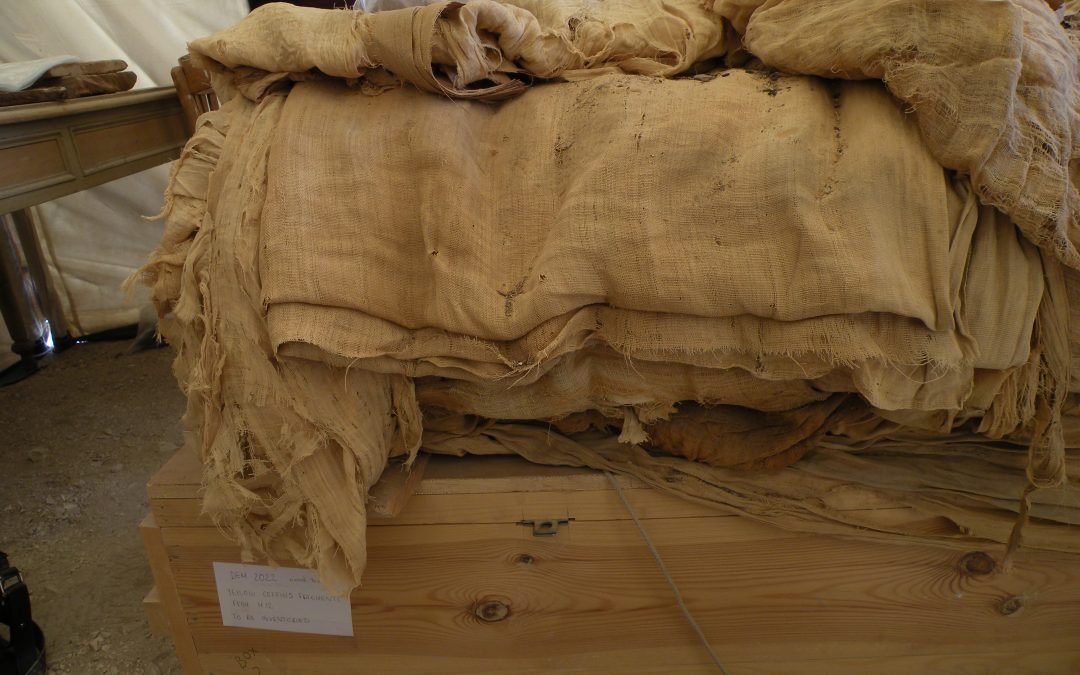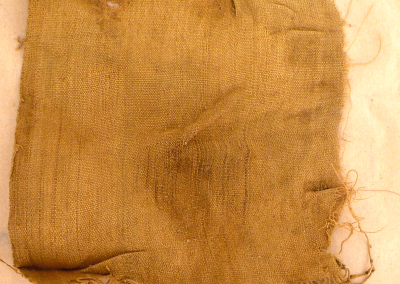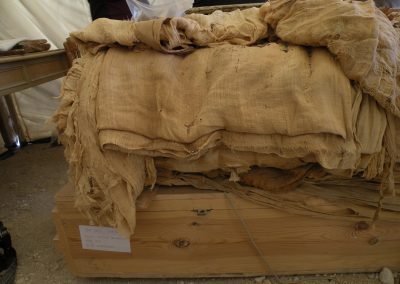Chiara Spinazzi-Lucchesi (Centre for Textile Research, Saxo Institute, University of Copenhagen)
Matilde Borla (Soprintendenza Archeologia, Belle Arti e Paesaggio per la Città Metropolitana di Torino, Italy)
Since 2021, a new project studying textiles and textile tools has commenced in Deir el-Medina, under the leadership of CSL. The objective of the project is to comprehend textile production through the examination of the numerous textile tools, yarns, and fabrics still extant on site, as well as those housed in museums worldwide. Unfortunately, few textiles retain indications of their excavation context, and unlike pottery, they lack intrinsic indicators of their chronology. Thus, mummies of adults and children excavated in the Eastern Cemetery by B. Bruyére offer a context of paramount importance. These mummies were fully unwrapped during excavation and swiftly repacked in their linen wrappings, then stored in TT217. While several individuals retain their original labels indicating their names and tombs, some lack labels, but anthropologists have reconstructed their provenance based on descriptions of their bodies provided in excavation diaries and reports.
The textiles remain on the mummies today, albeit not in their original positions. Some are well-preserved, while others are heavily stiffened by bodily fluids associated with mummification. As part of the clearance of TT217, the study and re-housing of mummies and textiles have been undertaken. Loose textiles are recorded and stored in boxes, while those adhered together forming a hardened shell around the body are recorded collectively and left in place. Subsequently, they are returned to TT217 and stored on metal shelves.
The textiles analysed during this season belong to individuals originally interred in the Eastern cemetery (1382, 1386, and possibly 1352). The mummies analysed in 2024 exhibit a wide variety in terms of fabric quality, typology, and measurements. One individual, Userhat, a three-year-old child, presents a completely different assemblage compared to others. While other mummies are wrapped in large rectangular fabrics, Userhat was initially clothed in a tunic fitting his size and then wrapped in strips of cloth made from similar tunics. These strips, mainly visible on the arms and chest, include at least one used to wrap the head, forming a now-hardened shell of adhered textiles.
One challenge posed by the mummies of the Eastern cemetery is determining which textiles remain in their original positions. In some instances, apparent consistency in stains on shrouds has been contradicted by Bruyère’s excavation reports, which clearly indicate changes in the order of shrouds. Furthermore, the textiles are partially adhered to each other and sometimes to the skin, suggesting the possibility of secondary decomposition occurring between Bruyère’s excavation in the ’30s and our intervention. Despite the ideal temperature and humidity conditions of the tomb/storeroom, this discovery underscores that the mummies and their textiles are gradually degrading, emphasizing the imperative need for comprehensive documentation.
The textiles from the Eastern cemetery constitute a vital collection for understanding textile traditions at the onset of the 18th dynasty. It represents one of the few substantial assemblages definitively dated to the dynasty’s first half. This period witnesses a shift in weaving tradition with the adoption of the vertical two-beam loom and the emergence of new weaving techniques, including the earliest examples of tapestry weaving found in royal tombs. Despite the significance of this period, little to nothing is known about textile production. Thus, the comprehensive study of textiles from the Eastern cemetery provides essential data for interpreting this pivotal phase of Ancient Egyptian textile production.



